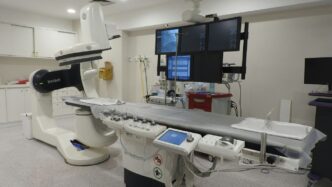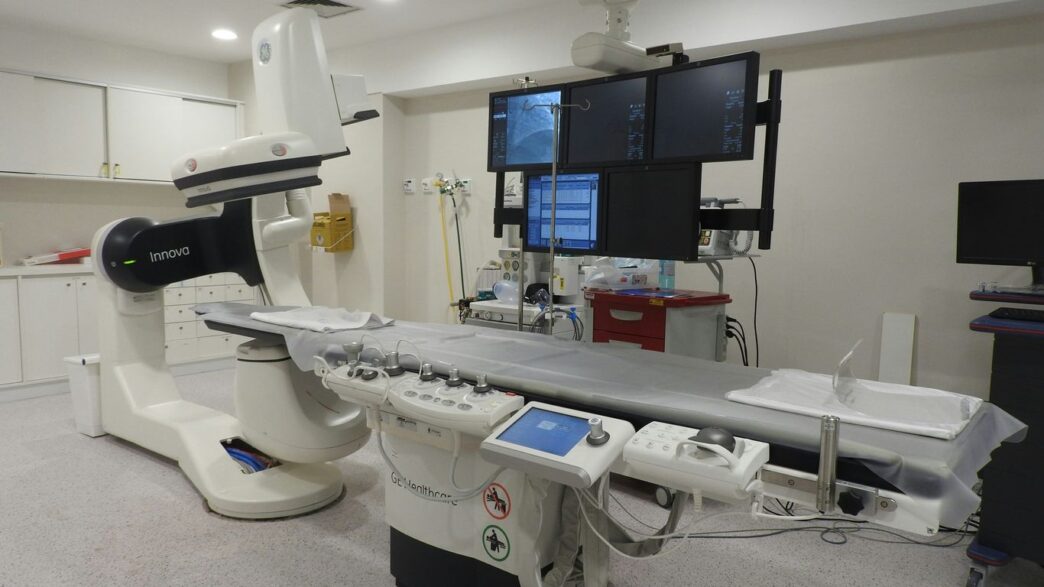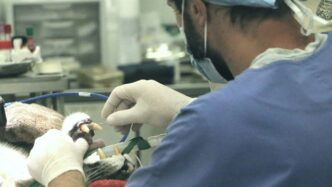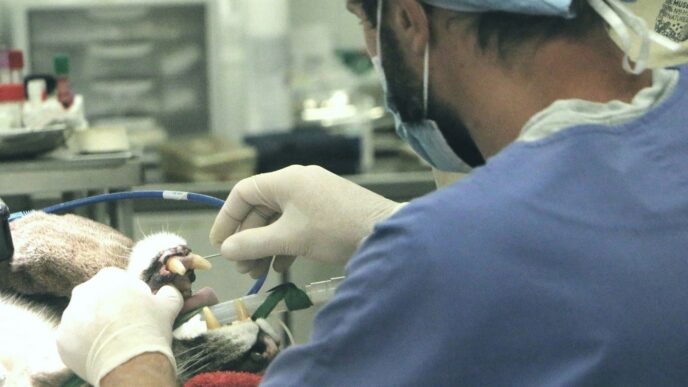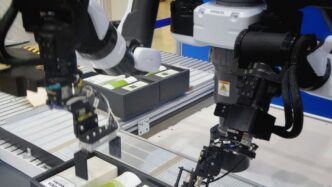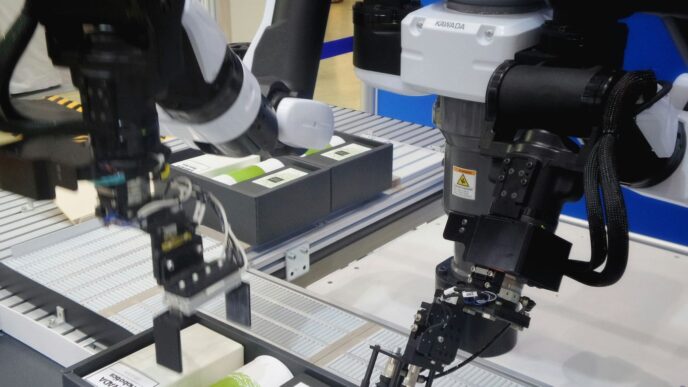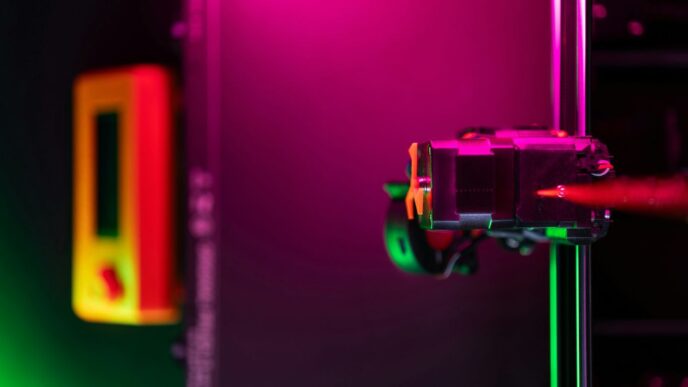It seems like every other week there’s some new tech promising to change how doctors do surgery. Medtronic’s Hugo Surgical Robot is one of those. It’s a robotic system designed to help surgeons perform procedures with more precision. They’re saying it’s a big step forward for minimally invasive surgery, and it’s starting to show up in hospitals around the world. Let’s take a look at what this hugo surgical robot is all about.
Key Takeaways
- The Hugo Surgical Robot from Medtronic is a new system for robot-assisted surgery, aiming to make procedures less invasive.
- It’s designed with features like independent robotic arms and a 3D view to give surgeons better control and precision.
- Early studies show the hugo surgical robot is feasible and safe for various procedures, especially in urology, gynecology, and general surgery.
- Benefits include potentially better patient recovery, less pain, and reduced hospital stays, though more long-term data is still being gathered.
- Medtronic is working to get the hugo surgical robot approved in more regions, including the U.S., to make this technology more widely available.
Introducing the Hugo Surgical Robot

Medtronic’s Vision for Robotic Surgery
Medtronic has been working on a new approach to robotic surgery with their Hugo system. They see it as a way to bring the benefits of robotic assistance to more surgeons and patients. The idea is to make robotic surgery more accessible and adaptable. It’s not just about having a robot in the operating room; it’s about how that robot can change the way procedures are done.
Key Features of the Hugo RAS System
The Hugo system is built to be flexible. It has four robotic arms that can be moved around independently. This means surgeons can set it up in different ways depending on the surgery. It also has a 3D high-definition screen so surgeons can see what they’re doing really clearly. The instruments on the robot arms have a good range of motion, letting surgeons do precise work. Plus, there are built-in safety features, like making sure the arms don’t bump into each other.
Here’s a quick look at some of its main parts:
- Modular Design: The system can be put together in different configurations.
- Independent Arms: Four robotic arms that can be positioned as needed.
- High-Definition Visualization: A 3D view for better surgical sight.
- Ergonomic Console: Designed for surgeon comfort during long procedures.
Global Availability and Regulatory Status
Medtronic has been working to get the Hugo system approved in different countries. It’s already being used in some places, like parts of Asia, for procedures like prostatectomies and general surgeries. Getting approval from regulatory bodies is a big step, and it allows more hospitals to consider using the technology. For example, approval in Japan, a major market, means more surgeons there can access this type of minimally invasive care.
Getting new medical technology out into the world takes time and a lot of checks. Medtronic is working through these processes to make sure the Hugo system can be used safely and effectively in more places.
Clinical Applications of the Hugo Surgical Robot
Urological Procedures with Hugo RAS
The Hugo system has found a significant foothold in urology, a field that has embraced robotic surgery for a while now. It’s being used for a variety of procedures, from removing the prostate in cases of cancer to more complex surgeries like taking out the entire bladder or parts of the kidney. Think radical prostatectomies, radical cystectomies, and partial nephrectomies – these are all areas where the Hugo RAS is making its mark. It’s also being used for pyeloplasty, which is a surgery to fix a blockage in the kidney. The precision offered by the robot helps surgeons tackle these delicate areas with more confidence.
Gynecological Surgeries Enhanced by Hugo
In gynecology, the Hugo RAS is proving to be a valuable tool as well. It’s being employed for procedures like hysterectomies, where the uterus is removed, and myomectomies, which involve removing fibroids. It’s also used in sacrocolpopexy, a surgery to fix pelvic organ prolapse. These are often intricate surgeries, and the robotic system’s ability to provide a magnified 3D view and greater instrument dexterity can really make a difference for both the surgeon and the patient.
General Surgery Applications
General surgery is another area where the Hugo RAS is expanding its reach. Procedures like cholecystectomies (gallbladder removal), appendectomies (appendix removal), and hernia repairs are now being performed with the system. It’s also being used for more complex operations like colectomies (removal of part of the colon) and low anterior resections for rectal cancer. The system’s modular design means it can be adapted for a wide range of general surgical needs, potentially making minimally invasive options available for more patients.
The Hugo RAS system’s versatility across urology, gynecology, and general surgery highlights its potential to become a go-to platform for a broad spectrum of minimally invasive procedures. Its adaptability means it can be configured to suit the specific demands of different surgical specialties, aiming to bring the benefits of robotic assistance to a wider patient population.
Benefits and Advantages of the Hugo Surgical Robot
Enhanced Precision and Dexterity for Surgeons
The Hugo Surgical Robot brings a new level of control to the operating room. Its robotic arms are designed to move with incredible accuracy, far beyond what a human hand can achieve. This means surgeons can perform delicate maneuvers with greater steadiness, which is a big deal for complex operations. Think about it: smaller incisions, less trauma to the body, and the ability to reach areas that might be tricky with traditional methods. The system also gives surgeons a really clear, 3D view of the surgical site, making it easier to see exactly what they’re doing.
- Superior instrument articulation: The instruments attached to the robotic arms can bend and twist in ways that mimic or even surpass the natural movement of the human wrist.
- Stable visualization: The camera system is steady, providing a consistent and magnified view without the natural tremor that can affect a surgeon’s hand.
- Ergonomic console: Surgeons operate from a console that’s designed to be comfortable, reducing physical strain during long procedures.
Improved Patient Outcomes and Recovery
When surgeons have better tools, patients often see the benefits. The precision offered by the Hugo system can lead to less blood loss during surgery. This often means patients don’t need to stay in the hospital as long and can get back to their daily lives sooner. Plus, with smaller incisions, there’s typically less pain after the operation and a reduced risk of infection. It’s all about making the surgical experience as smooth and as gentle as possible for the patient.
The shift towards minimally invasive techniques, like those enabled by robotic systems, is fundamentally changing how we approach surgery. The goal is always to achieve the best possible results for the patient while minimizing the impact of the procedure itself.
Cost-Effectiveness and Accessibility
While advanced technology can sometimes come with a high price tag, Medtronic is aiming for Hugo to be more accessible. The modular design means hospitals can configure the system to their specific needs, potentially making it a more practical investment. The idea is that by making robotic surgery more widely available, more patients can benefit from its advantages. This could mean that procedures that were once only possible with large, expensive robotic setups might become an option for a broader range of hospitals and, consequently, a larger patient population. It’s a step towards democratizing advanced surgical care.
Safety and Performance of the Hugo Surgical Robot

When we talk about any new medical technology, especially something as intricate as a surgical robot, safety and how well it actually works are the big questions on everyone’s mind. Medtronic has put a lot of effort into making sure the Hugo system is both secure and effective.
Built-in Safety Mechanisms
The Hugo system comes with several features designed to keep things safe during surgery. Think of it like a co-pilot that’s always watching. It has technology to help avoid accidental bumps between the robot arms, and it keeps a close eye on where the instruments are. Plus, it gives surgeons a sense of touch, called haptic feedback, which can help them feel what they’re doing and avoid damaging delicate tissues. It’s all about giving the surgeon more control and reducing the chances of something going wrong.
Feasibility and Safety in Early Studies
So, how has it performed in real-world use? Early studies and initial experiences with the Hugo system have generally shown it to be feasible and safe. Surgeons using it for procedures like prostatectomies and general surgeries have reported positive results. While it’s a new platform, the feedback suggests it can be used effectively, often comparing well to existing robotic or traditional methods. However, it’s important to remember that this is still a developing area, and more data is always helpful.
- Reduced blood loss compared to older methods.
- Shorter hospital stays for many patients.
- Faster recovery times reported in some cases.
- High-definition 3D visualization aids surgical precision.
The setup process for the Hugo system, particularly docking the individual arm carts, requires careful attention and practice. While this modularity offers flexibility, it means surgeons and teams need to be well-trained to position the arms correctly to avoid any issues during the operation. This learning curve is typical for new complex systems.
Long-Term Outcome Research
While the initial safety and performance look promising, the real test for any surgical system is its long-term impact. Researchers are still gathering data on how patients fare months and years after surgery with the Hugo robot. This includes looking at how well cancer treatments work over time for oncological procedures and how patients function in their daily lives. More extensive, long-term studies are needed to fully understand the lasting benefits and any potential late complications. As more procedures are performed and tracked, our understanding of Hugo’s long-term performance will continue to grow.
The Future of Robotic Surgery with Hugo
Ongoing Clinical Studies and Indications
Even though the Hugo Surgical Robot has already shown its worth in procedures like prostatectomies and hysterectomies, the journey is far from over. Researchers are actively exploring its use in a wider range of surgeries. Think about it: more studies mean more data, and more data helps us understand exactly where Hugo shines brightest. We’re seeing investigations into its application in complex general surgery cases and even more specialized gynecological procedures. The goal is to map out all the potential uses, making sure surgeons have the best tools for every situation.
Technological Advancements and AI Integration
Robotics in surgery isn’t a static field. Medtronic is looking ahead, thinking about how to make Hugo even smarter. This includes integrating artificial intelligence (AI) and improving imaging. Imagine AI helping surgeons with real-time analysis during an operation, or advanced imaging that lets them see things they couldn’t before. These aren’t just futuristic dreams; they’re active areas of development that could make surgery safer and more effective. It’s about building on the current platform to create something even more capable.
Expanding Access to Minimally Invasive Care
One of the big pushes with Hugo is making advanced robotic surgery more accessible. It’s not just about having the technology; it’s about getting it into more hospitals and making it affordable. Medtronic is working on making the system more adaptable and cost-effective. This means more patients, no matter where they are, could potentially benefit from less invasive procedures. It’s a move towards democratizing advanced surgical care.
Here’s a look at some of the areas where Hugo’s future looks promising:
- Broader Surgical Applications: Expanding beyond urology and gynecology into more complex general and specialized surgeries.
- Enhanced Surgeon Experience: Continued improvements in ergonomics and intuitive controls.
- AI-Driven Insights: Potential for AI to assist with surgical planning and real-time guidance.
- Global Reach: Increased availability in diverse healthcare settings worldwide.
The development of surgical robots like Hugo is a marathon, not a sprint. Each new study, each technological tweak, and each successful procedure adds to our knowledge base. The focus remains on patient well-being and providing surgeons with tools that improve outcomes and make complex procedures more manageable.
The Road Ahead for Hugo
So, what’s the takeaway here? Medtronic’s Hugo system is definitely making waves in the world of robotic surgery. It’s already getting nods in Europe and is on the cusp of U.S. approval, which is a pretty big deal. While it’s still early days and more studies are needed to really see how it stacks up long-term, the initial signs are good. It seems to be safe, works well for a bunch of different surgeries, and might even help bring down costs. Of course, it’s not perfect – surgeons need training, and setup can take a bit longer. But the potential is there for Hugo to become a go-to tool for surgeons looking to give patients the best care possible. It’s an exciting time for minimally invasive surgery, and Hugo is certainly a big part of that future.

